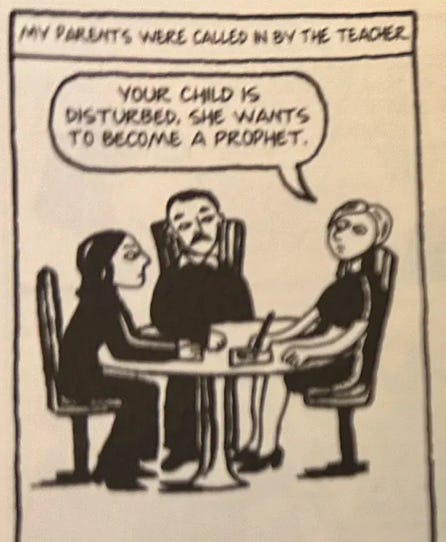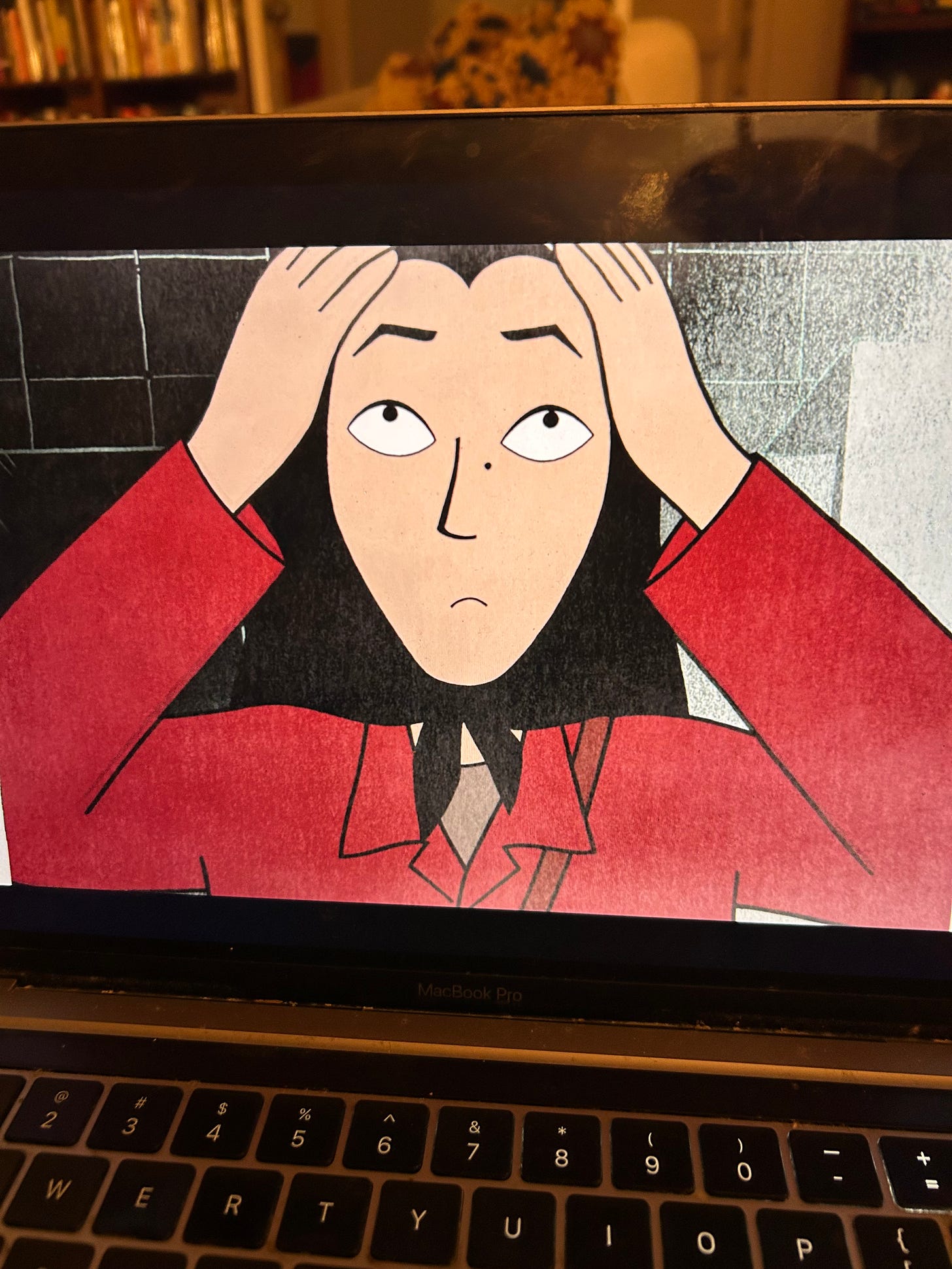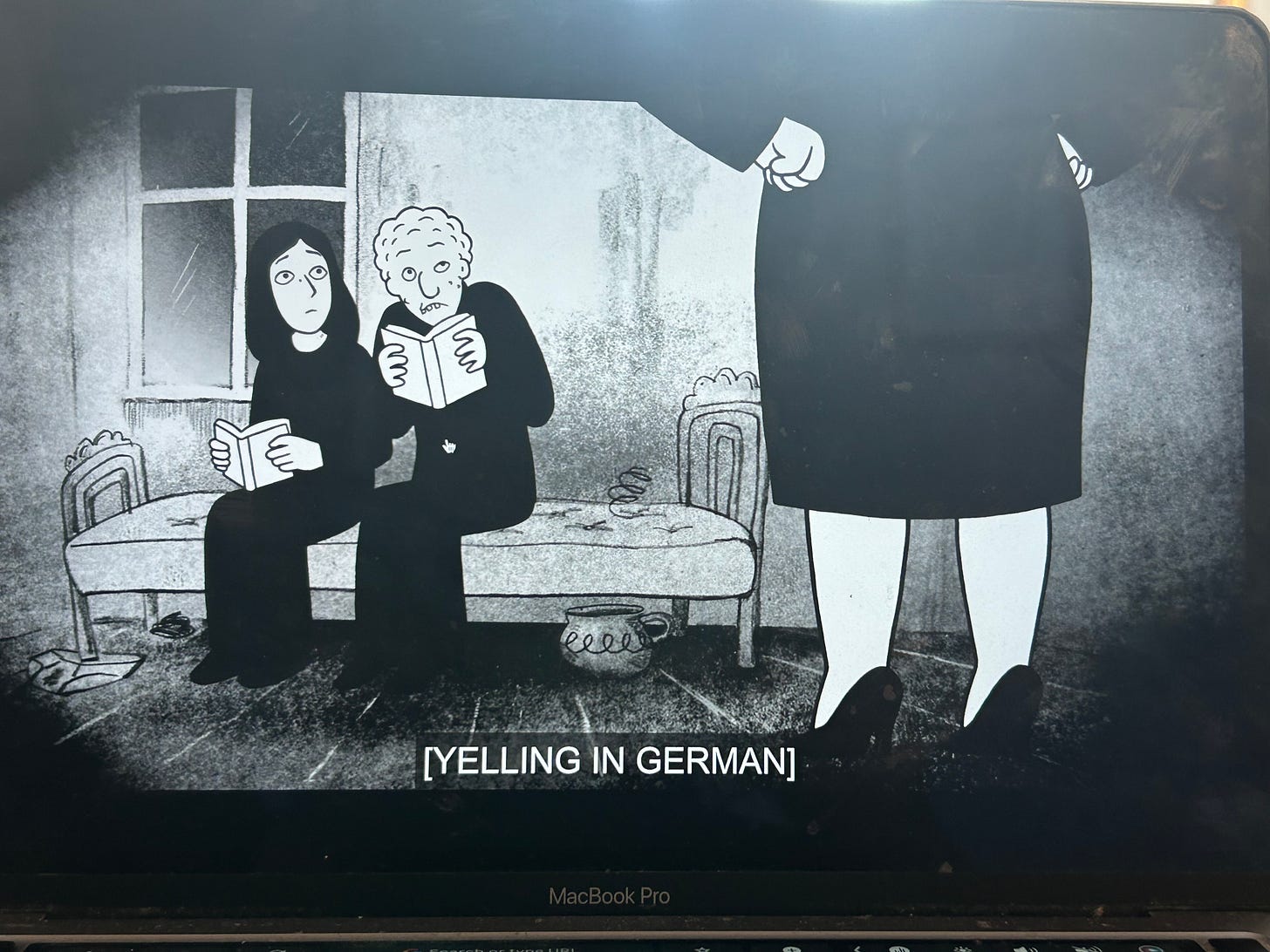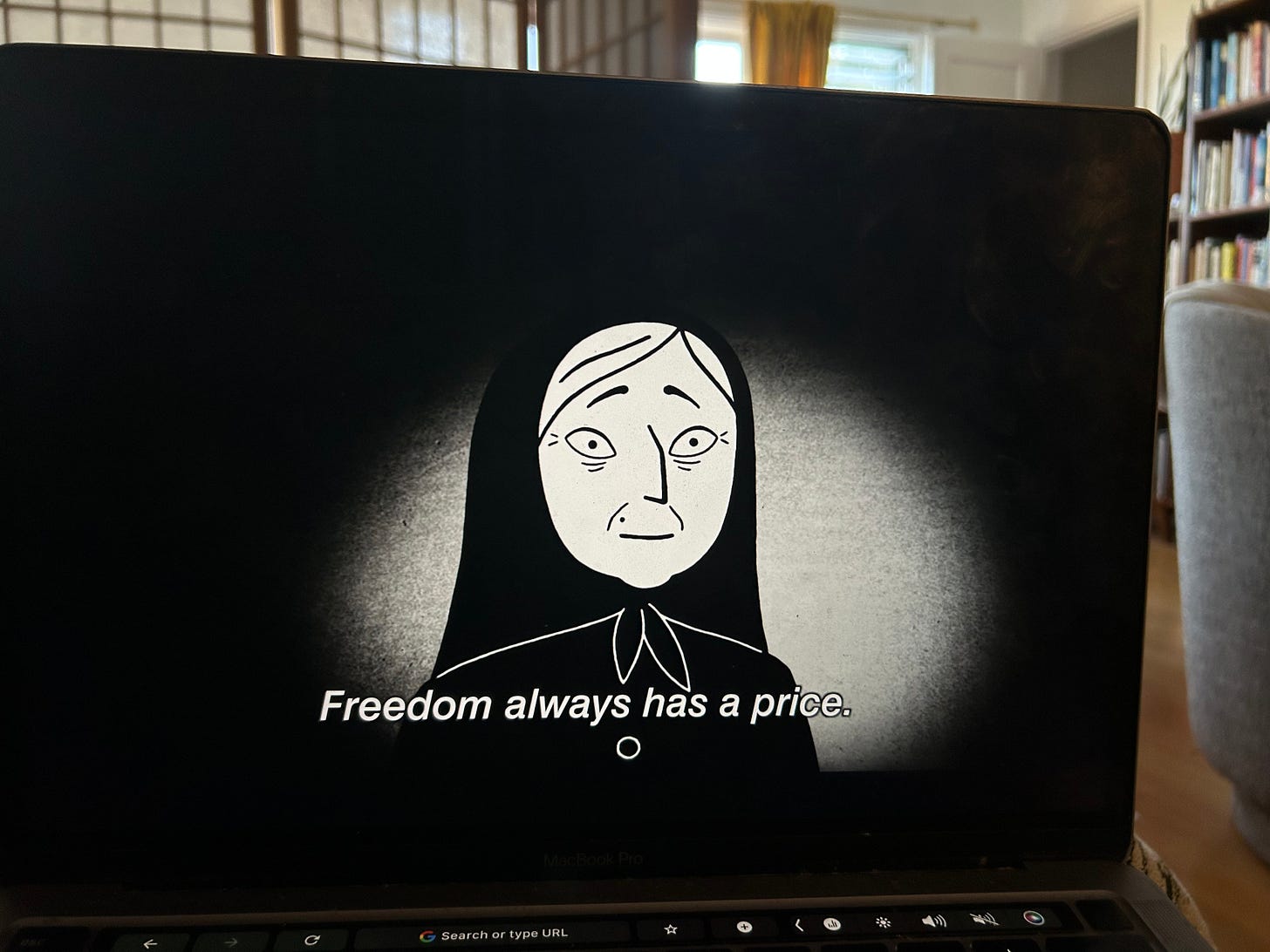PERSEPOLIS - SerioComics 52
PERSEPOLIS written and drawn by Marjane Satrapi, originally published by L'Association and then by Pantheon and Penguin Random House
52 Weeks of Enthusiasms
A goal of this Substack before I debut my own graphic novel was to reach 52 weeks of enthusiasms for other ones.
This is it, we’ve reached that milestone!
I decided to enthuse about PERSEPOLIS by Marjane Satrapi.
Because it is not only one of the best in the graphic literature medium.
But in my opinion one of the most successful adaptations into film.
Which despite all odds remains a goal of mine ;0
I happened to start re-reading PERSEPOLIS on Friday 11/22/24 when I noticed that it was Marjane’s birthday and she had posted a photo of what she looked like 47 years ago and declared that she always liked the number 47.
I reposted her story, mentioning my like for the number 47 as well due to it being a master number 11 in Numerology like my life path.
And she hearted it :0
Ironically enough the ISBNs that I will likely use to debut my graphic novel both add up to 74 which is also 11 in Numerology.
So if you believe in prophetic things like me (and Marjane) I think it’s a good sign!
Marjane Satrapi
Marjane Satrapi is an Iranian-French graphic novelist, cartoonist, illustrator, and filmmaker best known for her groundbreaking autobiographical graphic novel PERSEPOLIS and its award-winning animated film adaptation. Born in Tehran in 1969, Satrapi's work captures her experiences growing up during the Iranian Revolution and navigating life as an exile in Europe. Her storytelling blends personal, political, and historical narratives, making her a pivotal figure in contemporary graphic literature. Satrapi’s other notable works include Chicken with Plums, Radioactive, a film about Marie Curie, and Embroideries, which was enthused about in SerioComics 6.
PERSEPOLIS

PERSEPOLIS is the story of Satrapi's unforgettable childhood and coming of age within a large and loving family in Tehran during the Islamic Revolution.
Of the contradictions between private life and public life in a country plagued by political upheaval.
Of her high school years in Vienna facing the trials of adolescence far from her family.
Of her homecoming—both sweet and terrible.
And, finally, of her self-imposed exile from her beloved homeland.
It is the chronicle of a girlhood and adolescence at once outrageous and familiar, a young life entwined with the history of her country yet filled with the universal trials and joys of growing up.
Edgy, searingly observant, and candid, often heartbreaking but threaded throughout with raw humor and hard-earned wisdom.
PERSEPOLIS is a stunning work from one of the most highly regarded, singularly talented graphic artists at work today.
Recognizing Political Danger and Recognizing Overreaction
Like the last SerioComics 51 for MAUS, I thought it’d be helpful to read PERSEPOLIS partly in terms of what’s happening in America politically and what’s happening globally.
The graphic memoir can be quite clearly read as a warning sign for how fast things can turn into Fundamentalism, Autocracy, and Repression.
One very recent obvious example is Syria’s fall this past week.
The secular dictator seems to have been replaced by a more Islamicist regime much like how the Shah of Iran was replaced by the fundamentalists in PERSEPOLIS.
Another less obvious comparison right now is what will happen after January 20, 2025 when Trump resumes the US Presidency.
Will there be some sort of Christian Fundamentalism? American Fascism?
Or will it all be a counterfactual, which is another lesser known motif in PERSEPOLIS.
How, after her experience in Iran, when she’s in Europe, and is presented by fears of political danger there, she is able to see the human tendency for constant overreaction to less serious political dangers.
Or how when there are problems in the Middle East, the Europeans and Americans make their lives miserable with projected fear, guilt, and anger.
And yet most significantly it remains that PERSEPOLIS is an account of how rapidly political danger can transform.
Even Marjane’s uncle who lived through the Shah’s repression, tries to brush away the potential for extremism from the new Islamic leadership.
Soon enough Marjane’s femininity, individuality, and very is existence is repressed.
And there is chaos, war, and the worst possible things.
How does the main theme and the leitmotif apply to many of us in America going into 2025.
We should remain aware and use our discernment as well as do our best to defend against encroachment on our values but also perhaps against overreacting to disagreement.
Praying, Integrity, and Maturation
One of my favorite things about PERSEPOLIS is that, to me, it is also a book about maintaining the spark of spirituality within religious repression.
Despite the rise of Islamic Fundamentalism which had conquered Persia in the past.
Satrapi’s character continues to see the connection between prayers and there being something, a God to her, that she is corresponding with and helping her.
I also really enjoyed Marjane’s lessons in Integrity.
Whether that was learning to stand up to so-called friends.
Or re-learning not to treat others carelessly especially if it might mean their innocent punishment.
How if you don’t do what you know to be the right thing.
You start to not have self-respect.
Or the respect of others.
But if you start to right your ways.
Things can improve quite rapidly!
Marriages, Divorces, and Self-Actualization
I also really appreciated Satrapi’s depiction of the reality of her first marriage.
She showed how opposites attract.
Conflicting yet complimenting each other.
How they collaborated well on creative projects.
But weren’t ready for a procreative one.
Drifted apart.
How she was able to face that reality sooner rather than later.
Dissolving the marriage.
And moving onto new forms of self-actualization.
Film Adaptation

As mentioned above, I believe PERSEPOLIS is one of the best film adaptations of a graphic novel.
There are many reasons why but here are three.
The film is adapted in a way that both captures the essence of the original but also enhances it. The style is similar especially because it is animated instead of live action. But there are now some added moments of color, camera movements, as well as editing. That all elevate the film into more than just a shot by shot reproduction.
The film maintains elements of the first person narration common in graphic memoirs but doesn’t rigidly adhere to that formal quality which might have made the film less enjoyable. And instead Satrapi finds new formal flourishes for the film medium such as flashbacks where a character looks malformed physically after learning that he’s malformed emotionally.
The last and there are many other reasons I believe the adaptation is so successful is that Satrapi steps into and is given the autonomy to be the film adapter and co-director. This gives the film a similar auteuristic experience as the book that is sometimes lacking in graphic novel adaptations such as Robert Zemeckis’ very different take of Richard McGuire’s HERE which was enthused about in SerioComics 50. Such freedom across mediums is rare but Satrapi lives up to both challenges.
Moral Authority and Should We Buy A Gun?
Re-reading PERSEPOLIS helped me re-affirm my own values.
While my graphic novel doesn’t have the answers for guns in America.
It also isn’t so open-ended as to be compromised of Moral Authority.
It has a POV of progressing with gun safety while conserving gun rights.
While reading an article in The Atlantic about how Elon Musk compared the DA nomination of Matt Gaetz positively to comic book character, Judge Dredd, and how others are somewhat illiterately or at least unironically celebrating American cultural anti-heroes, I’m happy to be part of making serious comics that offers some moral guidance.
Thanks for Reading!
PERSEPOLIS written and drawn by Marjane Satrapi and published by L’Association and Pantheon and Penguin Random House is available from the publisher and Amazon.
This concludes the year of 52 enthusiasms!
We will continue but at a slower rate of 2 enthusiasms a month plus the monthly gun debate update for 3 posts a month total.
Paid Subscribers will still be the only ones with access to the archives.
I’m excited to have more time for my follow-up graphic novels.
As well as to devote the necessary time for the debut of SHOULD WE BUY A GUN?
An announcement of how you can finally buy the book will be very soon!
























I just read volume 1 of the series, ending right when she is about to leave for Austria. It's a very relevant novel and I'm glad to see somebody writing about it. Crazy how things can change so quickly, Marjane and her family were very brave.